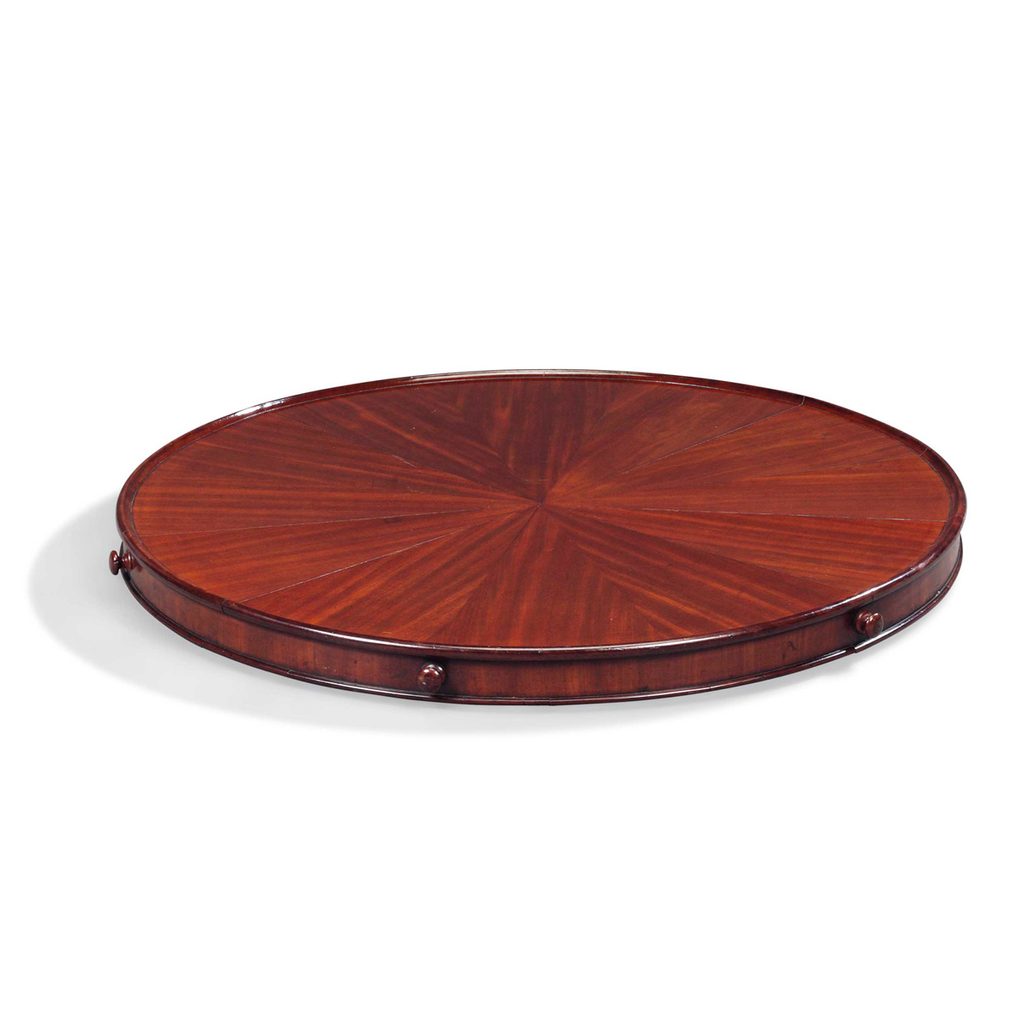The Real Reason the Lazy Susan Got Its Name
Updated: Jan. 27, 2023

A lazy Susan is a round tray that rotates and is meant to sit on a countertop or table and allow multiple diners to access food, condiments and relishes without having to pass them around.
A lazy Susan is a round tray that rotates and is meant to sit on a countertop or table and allow multiple diners to access food, condiments and relishes without having to pass them around.
So Why is the Lazy Susan Lazy?
It’s unclear where the name lazy Susan came from. If you’ve dined at a Chinese restaurant, you’ve likely used one there. The Smithsonian notes a revolving table, which later evolved into what we know as the lazy Susan, was first used in 13th century China. It gained popularity over centuries and found its way into Chinese restaurants as a “hygienic dining tray” in the 1960s.
Some historians credit Thomas Jefferson and Thomas Edison. The Los Angles Times notes the two Thomases allegedly named the invention after sluggish daughters, yet many say there’s no credible proof to support that claim.
“Historians can trace the concept to 18th century England, when it was probably known as a dumbwaiter. It may have become popular at a time when household servants were in declining supply. In the absence of maids or footmen to refill wine goblets and deliver condiments, diners were forced to reach across the table or interrupt conversation with ‘pass the pimientos please,'” the Los Angeles Times explained.
An early use of the lazy Susan in the United States was possibly in 1891 when Elizabeth Howell of Missouri was granted a patent for a self-waiting table. “This invention relates to certain new and useful improvements in self-waiting tables of that class in which the movable portion is supported upon rollers and mounted on a central pivot; and it has for its objects among others to provide an improved table of this character in which provision is made for preventing crumbs or dishes or other articles from getting between the table proper and the revolving part, the said provision adding also to the neat and tasteful appearance of the table,” the patent states.
And if that’s not enough possible origins for you, the Chicago Tribune notes the name can be traced back to an advertisement in the December 1917 issue of Vanity Fair magazine.”Ovington’s, a now-defunct New York store, ran the ad. It was a two-page Christmas promotion that spotlighted a number of fancy household items as possible gift ideas. Item No. 365: a mahogany tabletop tray that measured 16 inches in diameter and cost $8.50.”
Despite it not being 100 percent clear exactly where the term lazy Susan originated, one thing is clear: lazy Susans are valued. In fact, Christie’s auction house often sees these home helpers go for hundreds, if not thousands of dollars. This mahogany Lazy Susan went for $3,000 GBP, which translates to more than $3,800 in U.S. dollars.
